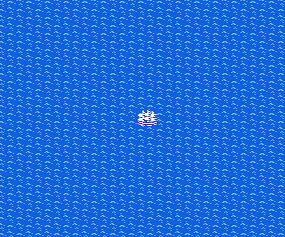
[Dragon Quest IV] was a nice change of pace from Dragon Quest III, which aced Dragon Quest II, which seemed confused about what, exactly, Dragon Quest had put in place when it arrived, in 1986, as the first “Japanese” console-based video role-playing game of all-time.
— Tim Rogers, in a review of Dragon Quest VIII
Just finished III. It improves so much on II, and picks up so much momentum towards the end, that I can almost forget the hundreds of meaningless battles I fought along the way. I don’t mind lots of battles until they start to repeat themselves: when I’m attacked over and over by the same bands of under-powered monsters from five levels ago in an area I’ve already explored; when a given floor of the dungeon is home to a mere three groups of enemies such that in a single narrow passageway I’ve fought them all twice. This, to me, is Dragon Quest III’s biggest flaw: for a game so intent on combat, there aren’t enough opponents.
I’d sooner recommend the original Final Fantasy, for its bewildering variety of enemy groups and the grace period it gives you after each battle (something the PlayStation remake thoughtlessly withholds), or the original Dragon Quest, for its simple, lightning-fast battles (ruined in the Game Boy reprise, which includes the sequel and stretches its more complicated interface across both games, requiring you to select, in every battle, in a game with only one party member, the party member you’d like to control).

Confronted with an ocean of possibilities in the wake of their initial success, the team at Enix responded, in Dragon Quest II, by tripling the size of the world, filling it with water, and giving the player a ship. The developers cling to the world of the first game, replicated here in miniature, like a life preserver; the first landmass you discover after getting the ship is, in fact, the Alefgard of the original Dragon Quest. Much of the gameplay thereafter involves searching — and this being Dragon Quest, I mean literally SEARCHing — tiny islands for mystical totems.
By contrast, Dragon Quest III embraces the first game, but not before calmly and patiently constructing a world of its own. The final trip through Alefgard, rebuilt this time in greater detail, is one of the game’s best sequences. I haven’t played Dragon Quest IV, but I have very high hopes.